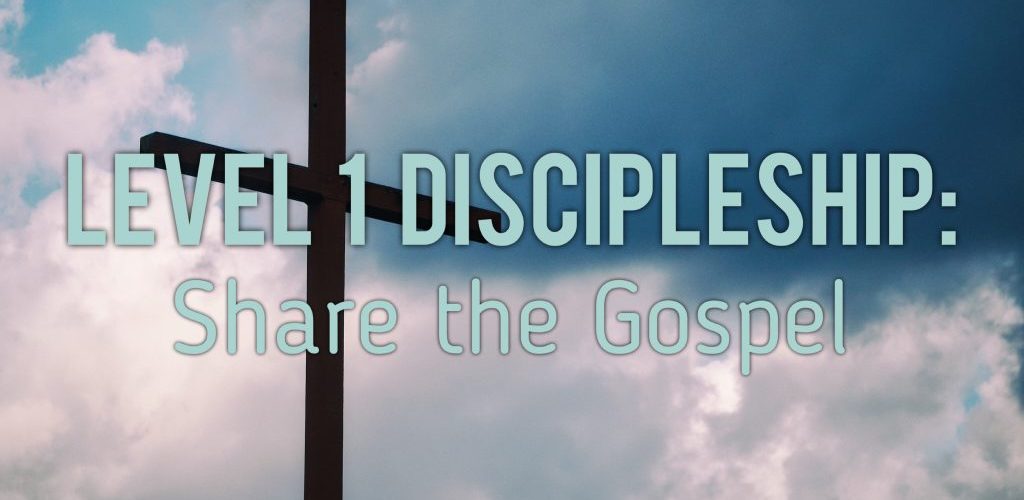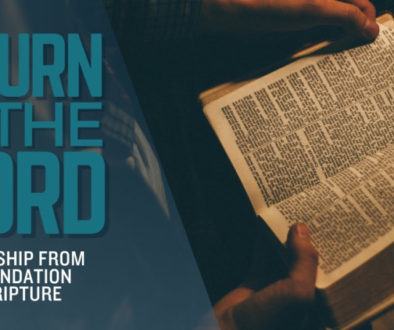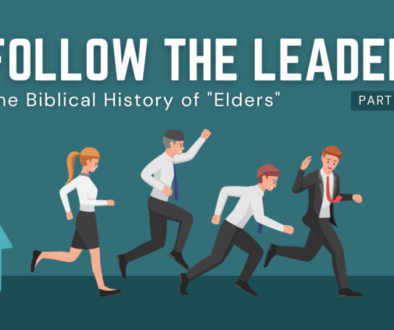As I shared in my last post, there are four levels of interaction that take place when making disciples. The first level is the starting point of the gospel, as we go into the world preaching the gospel to the lost.
While we will not spend much time in this series on the practicals of outreach, I feel it is necessary at this point to discuss how to present the gospel to the lost, as this is the place where their discipleship begins – the point of salvation.
Briefly, I want to share with you two methods of gospel presentation, that will enable you to keep the story of the gospel in mind in any opportunity to share with non-believers. Each of these methods will utilize four key words that will keep you on track for sharing the gospel. They are not original with me, but have been effective for years in my own mission work.
After sharing these two methods, I also want to share with you the importance of incorporating your personal testimony in your outreach efforts.
Method 1: The Ground-Level Gospel
I call this the Ground-level gospel because it keeps the story very personable to the people we are sharing with. Though using scripture is always necessary, this method doesn’t go as deep into the history of the bible as the second method will. It is very simple, and may have even been the method used by the person who led you to Christ.
The four keywords for this method are GOD – MAN – CHRIST – RESPONSE. As I have written in our ministry’s team training handbook:
“In this way of presenting the Gospel, you begin by explaining who God is; that He is perfect and holy, and that when He created everything in the universe He made it ‘very good.’ Because God is perfect and holy, He cannot associate Himself with the unholy. This brings us to the second point.
“Man, though he was created holy in the image of God, chose to disobey God’s command and eat of the forbidden fruit in the Garden of Eden. With this one action, sin entered the world and man lost his connection with God. The judgement came with the curses pronounced in Genesis 3, as well as eternal separation from God in this life and in the next.
“This is where Christ comes in. When you have a Holy God, and a sinful humanity, there has to be a major move on both sides in order to make reconciliation. So when Jesus was born, what happened is that God took on flesh and became a man. He lived a sinless life according to the law of God, then died in our place, taking our punishment for sin, and offering us new life and righteousness through faith in Him.
“With these three things in mind, the person being ministered to is then called to a response. Will they accept Jesus as their Savior and be reconciled to God through faith in Christ, or will they reject Christ as Savior and continue in life separated from God?”
Method 2: The High-Level Gospel
Though the first method is simpler, and can be used for a quick presentation of the gospel, the second method is, by far, my favorite. This method uses the full story of scripture to lay out God’s beautiful plans, the problem of sin in humanity, and the reason for which Christ came into the world. It can also be shared conversationally when giving an explanation of your faith, without adding the immediate pressure of a response, if the person is far from getting saved. Instead, it can act as the starting point to impart faith in God, that may lead to a later decision.
The four keywords for this method are CREATION – FALL – REDEMPTION – RESTORATION. Again, let me share form our ministry’s training manual:
“God created all things in the beginning and made them good. He put humanity in charge of His creation, giving him authority to rule as a steward of God’s universe. Again, this creation was perfect and holy, and man himself was righteous having been created in the image of God.
“When mankind first sinned against God, known as ‘the fall,’ not only was man affected with the curse, but the whole creation as well. This is why everything we see in the world is not as it was originally intended to be: war, famine, violence, natural disasters, etc.
“Another downside of the fall was that the authority over the earth which God had given to mankind was then delivered to the devil, who has become ‘the God of this world’ and ‘the prince of the power of the air…at work in the sons of disobedience (lost man).‘
“Redemption is a theological word meaning that on the cross, not only did Jesus die for our sins, but that He also came to break the curse over creation and reclaim what was lost in the fall. According to Luke ‘…the Son of Man has come to seek and to save that which was lost.’ This goes beyond just the salvation of souls, but also the the redemption of righteousness and justice in the earth, and ultimately the authority over creation. This is why after the resurrection, Jesus tells the disciples that now, He has all authority in heaven and on earth.
“This is where personal salvation comes in. If Jesus is the Redeemer of all things, that means He also redeems us, and brings us back to our original intended relationship with God the Father. He also gives us new life and restores our ability to walk in holiness by faith in Him. Though we are not completely perfected in the moment of salvation, we now recognized Jesus as the Lord of our life and submit to Him. As we work to build our relationship with Him, we also begin to be conformed to His image once again, just as we were originally created to be in the beginning.
“This presentation of the gospel also looks forward to the day Jesus returns and we will see the final restoration of all things back to the way God intended them to be in the beginning. Sin and death and the devil will be dealt their final blow. Jesus will judge the world according to whether or not their faith was in Him, and then He, along with all those who believed in Him as Savior will see all things finally made right. There will be a new heaven and new earth, and all the promises from the Bible will finally be fulfilled. This should get us excited.“
One final note about this narrative: even if you do not use this method for reaching the person in salvation, it is an important story for them to understand once they are saved. Therefore, if the person gets saved using method 1, then method 2 should be used at the beginning of their Level 2 Discipleship.
No matter which method you use to preach the gospel, what must be made clear is that our goal in Level 1 Discipleship is to take a lost person and lead them to salvation in Christ. We must be bold to share the gospel, and we must give them the opportunity to accept Christ as their personal Savior.
Using Your Personal Testimony in Sharing the Gospel
Let me once again share from Sozo Ministries’ training handbook:
“It is not enough to know the gospel story with your head. You must also know it to be true and effective with your experience for your words to carry any meaning to those you are sharing with.
“Your testimony is your personal connection to God’s story in human history and is a tool He will use for leading others to Himself.
“The Hebrew word for testimony, ‘edut,’ and the Hebrew word for witness, ‘ed,’ both come from a root word meaning ‘to duplicate or repeat.’ This means that in sharing our testimony, we are asking God to repeat the action in the lives of those we share with. This can be our salvation testimony as well as our testifying to other works of God in our life. It is a way of saying, ‘If God did it for me, He can do it for you.’ This honors God by giving Him credit and raises faith in the person making a way for God to do it again for them.
“If sharing a testimony is declaring ‘Do it again, Lord,’ then is it any wonder that all throughout the Old Testament God commands His people to share the testimonies of His faithfulness with the next generation? Psalm 119 continually talks about remembering God’s testimonies and delighting in them. It is also the privilege of the Christian that we get to be Jesus’ story-tellers as we are called to be His witnesses to the world. Remember, “the testimony of Jesus is the spirit of prophecy.”
Sharing your personal testimony requires you to know where you were before Christ found you, how the gospel came into your life, and the change God has brought in you now.
I am not the man I was before Christ saved me at 16 years old. I was a teenage slacker, alcoholic, trying drugs and experimenting sexually. Even in church, I was a hypocrite, drinking with my youth leader on Saturday nights. Thank God, He used a man bold enough to preach the gospel to me, and though I knew the stories of Jesus my whole life, I finally put my faith in Christ to be saved. Today, I am free from all those addictions and perverse lifestyles. I am faithfully married, and have the privilege of sharing this gospel all around the world.
What is your Gospel story? It is not a shame to share what your lost self did before Christ saved you, as He will use it to bring others to Himself. We must know the gospel in our heads and with our lives. Then God will use us to reach others as well.
(Click here for Level 2 Discipleship – The Basics of the Faith.)
Photo by Aaron Burden on Unsplash



